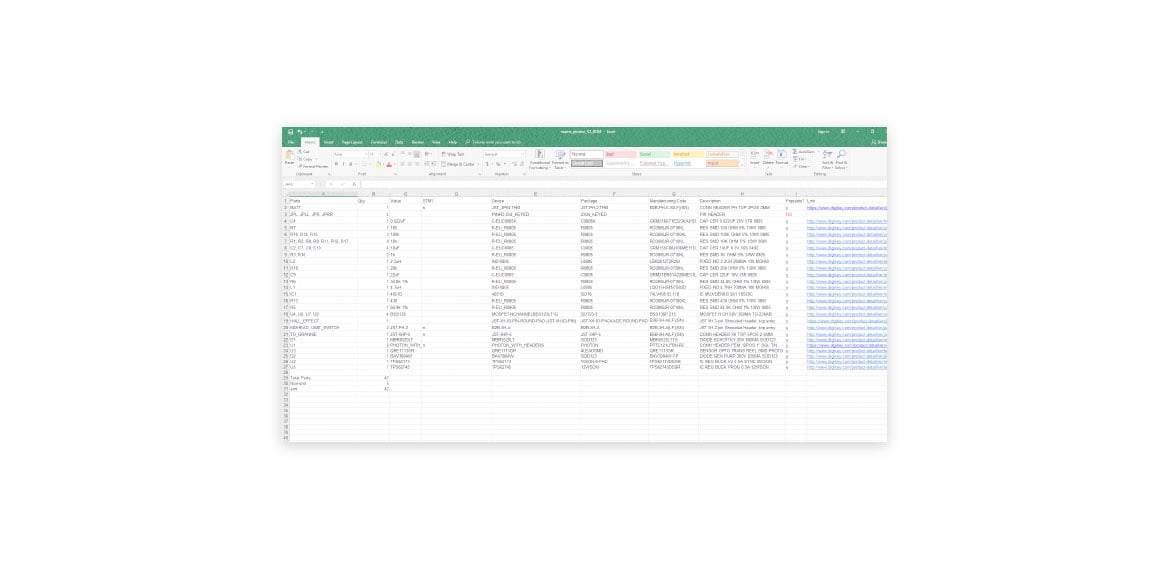Bill of Materials
Often referred to as product structure or associated list, the Bill Of Materials is a list of raw materials required for product assembly and a comprehensive list of parts, items, assemblies, and sub-assemblies, which can be understood as the recipe and shopping list for creating a final product. The quality of your Bill of Materials can make or break your product and that’s even more so true when manufacturing internationally. Our international project management team can assemble a bill of materials that will translate and communicate a product clearly at every stage of the production process.

Components of a BOM
A typical BOM is comprised of multiple parts, each part takes up a line and each line lists:
- Product Code
- Part Name
- Part Number
- Part Revision
- Description
- Quantity
- Unit of Measure
- Size
- Length
- Weight
- Specifications
- Features of the Product
Why should I use a BOM?
There are many reasons to have a Bill of Materials for your product. It’s hard to imagine why anyone would want to make a product without one. Any serious entrepreneur or brand creating a product will use some form of organized chart detailing the products parts. A BOM in particular is the industry standard for organizing the various parts and quantities used to manufacture a product. A huge perk of using this format is the universality of it. Most manufacturers around the globe will understand it.
How do I create a BOM?
Well it’s really as simple as opening a spreadsheet document and filling in the rows and columns with the various components listed above. The difficulty is in the details. In other words, a BOM is easy to make but a good BOM requires expertise. There are many design and manufacturing companies that will build or modify a BOM for you, even from an existing product. Our team is able to help you create your BOM. If you’re looking for help, reach out to us via our contact form or phone number listed in the sidebar.
